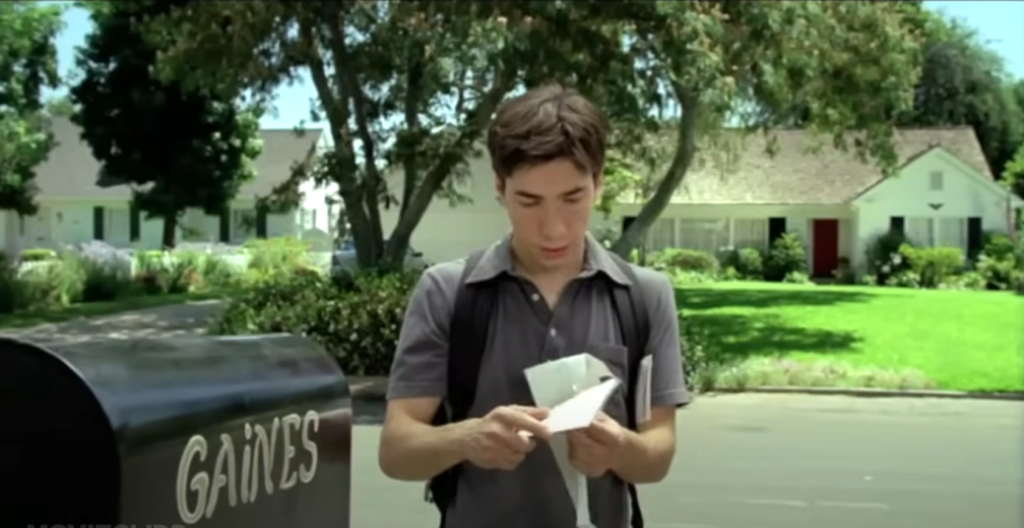The Rise of Indie Films in Hollywood
Over the past few decades, indie films have carved out a significant space in Hollywood, challenging the dominance of big-budget blockbusters. These films, often produced outside the major studio system, have not only gained critical acclaim but have also started to attract mainstream attention. Unlike traditional Hollywood movies that rely heavily on spectacle and formulaic storytelling, indie films are known for their innovative approaches to narrative and character development. They have become a powerful force in the film industry, offering audiences fresh perspectives and stories that deviate from the conventional.
This article explores how indie films break away from the mold of Hollywood’s standard storytelling practices. By embracing non-linear narratives, character-driven plots, and experimental structures, indie filmmakers are redefining what cinema can be. These films often delve into deeper, more complex themes, providing a stark contrast to the often predictable and commercialized narratives of mainstream Hollywood. As we delve into the world of indie cinema, we’ll see how these films are pushing the boundaries of storytelling, offering viewers something truly unique and thought-provoking.
Defying Expectations: Non-Linear Narratives and Experimental Structures
One of the defining features of indie films is their willingness to defy conventional storytelling techniques, particularly through the use of non-linear narratives and experimental structures. Unlike the traditional three-act structure that dominates Hollywood, where stories unfold in a straightforward, linear fashion, indie films often play with time and structure to create a more engaging and unpredictable narrative experience.
Take, for example, Christopher Nolan’s Memento (2000), a film that unravels its plot in reverse, forcing the audience to piece together the story as the protagonist struggles with his own fragmented memory. This non-linear approach not only heightens the tension but also mirrors the disorienting experience of the character, creating a deeper connection between the viewer and the narrative. Another example is Quentin Tarantino’s Pulp Fiction (1994), which tells its interconnected stories out of sequence, challenging the audience to follow along and find meaning in the disjointed timeline.
These experimental structures allow indie films to break free from the predictable patterns of mainstream cinema. By disrupting the flow of time or presenting events out of order, these films engage viewers on a more intellectual level, inviting them to actively participate in the storytelling process. This subversion of traditional narrative techniques is a hallmark of indie cinema, offering a refreshing alternative to the formulaic plots often seen in Hollywood blockbusters.
Character-Driven Stories: Emphasizing Depth Over Spectacle
Indie films are known for their emphasis on character-driven stories, where the focus is on the depth and complexity of the characters rather than on high-budget action or spectacle. These films often explore the inner lives of flawed, multi-dimensional characters, providing a more authentic portrayal of human experiences. This approach stands in stark contrast to many Hollywood blockbusters, where character development can sometimes take a backseat to special effects and big set pieces.
In films like Lady Bird (2017), directed by Greta Gerwig, the narrative revolves around the protagonist’s coming-of-age journey, exploring her relationships, struggles, and growth. The film’s success lies in its intimate portrayal of the lead character, allowing the audience to connect deeply with her experiences. Similarly, Moonlight (2016), directed by Barry Jenkins, tells the story of a young black man coming to terms with his identity and sexuality in a world that often marginalizes him. The film’s power comes from its raw, emotional exploration of the protagonist’s life, providing a window into his world in a way that feels both personal and universal.
By prioritizing character depth and emotional resonance, indie films offer a narrative experience that is often richer and more rewarding than the spectacle-driven storytelling of Hollywood blockbusters. These films invite viewers to engage with characters on a deeper level, exploring their complexities, flaws, and growth in a way that feels true to life. This focus on character-driven storytelling is a key element that sets indie films apart, allowing them to tell stories that are not only compelling but also deeply human.
Exploring Real-World Issues: Social Commentary and Authenticity
Indie films have long been celebrated for their ability to tackle social, political, and cultural issues with a level of nuance and authenticity that is often missing in mainstream Hollywood cinema. These films don’t shy away from difficult or controversial topics; instead, they embrace them, offering audiences a chance to engage with complex issues in a meaningful way. By representing diverse voices and perspectives, indie films provide a platform for stories that might otherwise go unheard.
For example, The Florida Project (2017), directed by Sean Baker, sheds light on the lives of children living in poverty on the fringes of Disney World. The film’s raw and unfiltered portrayal of its characters’ struggles offers a stark contrast to the polished narratives of Hollywood, making it a powerful piece of social commentary. Another example is Sorry to Bother You (2018), directed by Boots Riley, which tackles issues of race, class, and capitalism in a darkly comedic, surreal way. The film’s bold approach to these topics resonated with audiences and critics alike, sparking important conversations about the realities of modern society.
The importance of representing diverse voices in indie cinema cannot be overstated. These films often give a voice to marginalized communities and bring attention to issues that are overlooked in mainstream media. By doing so, they not only enrich the cinematic landscape but also contribute to a broader cultural dialogue, helping to shift perspectives and inspire change.
The Power of Budget Constraints: Innovation Through Limitation
One of the defining characteristics of indie films is their ability to turn budget constraints into creative opportunities. Unlike Hollywood blockbusters, which often have the luxury of big budgets, indie films are typically made with limited financial resources. However, rather than viewing these limitations as a hindrance, many indie filmmakers embrace them, using budget constraints to fuel innovation in both storytelling and visual style.
For instance, Paranormal Activity (2007), directed by Oren Peli, was made on a shoestring budget but became a massive success due to its innovative use of found footage and minimalist production techniques. The film’s low-budget aesthetic not only added to its authenticity but also heightened the sense of realism and suspense, making it one of the most profitable films ever made. Similarly, Clerks (1994), directed by Kevin Smith, was shot for just $27,000 in the convenience store where Smith worked. The film’s simplicity and rawness became its strengths, resonating with audiences and establishing Smith as a unique voice in independent cinema.
Budget constraints often push indie filmmakers to think outside the box, resulting in creative solutions that contribute to the film’s distinctive identity. Whether it’s through inventive camera work, unconventional storytelling, or a focus on character-driven narratives, these limitations can lead to a more intimate and authentic cinematic experience. In many cases, the ingenuity born from financial limitations is what sets indie films apart, allowing them to stand out in a crowded film landscape.
Breaking Genre Boundaries: Redefining Conventional Genres
Indie films are often at the forefront of genre experimentation, blending or subverting traditional genres to create hybrid narratives that defy easy categorization. This willingness to push the boundaries of genre allows indie filmmakers to offer fresh and innovative takes on familiar themes, resulting in stories that feel both original and resonant.
For example, A Ghost Story (2017), directed by David Lowery, blends elements of horror, drama, and existential contemplation to create a film that is both haunting and deeply moving. While it initially presents itself as a ghost story, the film quickly subverts expectations, using its supernatural premise to explore themes of love, loss, and the passage of time in a way that is both unique and profound. Another notable example is Swiss Army Man (2016), directed by Daniel Scheinert and Daniel Kwan, which combines elements of fantasy, comedy, and drama. The film’s absurd premise—a man befriends a flatulent corpse—belies its deeper exploration of loneliness, friendship, and self-acceptance, making it a standout in the indie film landscape.
This genre experimentation is not just about mixing different elements but about creating something entirely new. By challenging the conventions of traditional genres, indie films can explore themes in ways that are more nuanced, surprising, and impactful. These films often set new trends in storytelling, influencing not just other indie filmmakers but also mainstream Hollywood. The success of these genre-defying films demonstrates that audiences are hungry for stories that break the mold, offering a more diverse and rich cinematic experience.
The Cultural Impact of Indie Films: Shaping the Future of Cinema
Indie films have had a profound impact on the cultural landscape of cinema, often serving as a catalyst for change within the industry. By pushing the boundaries of storytelling and representation, indie films have paved the way for more diverse voices and narratives to be heard, challenging the status quo of mainstream Hollywood.
One of the key contributions of indie cinema is its role in elevating stories from underrepresented communities. Films like Moonlight (2016) and Lady Bird (2017) brought fresh perspectives to the big screen, resonating with audiences and critics alike. These films not only garnered critical acclaim but also demonstrated the commercial viability of stories that break away from the typical Hollywood formula. As a result, they have inspired a broader shift towards more inclusive storytelling in the film industry.
Indie films also influence mainstream cinema by introducing innovative narrative structures and visual styles. Many directors who began their careers in indie film have gone on to shape Hollywood, bringing with them the creative approaches they developed in the independent scene. This cross-pollination between indie and mainstream cinema continues to drive the evolution of film as an art form, ensuring that cinema remains a dynamic and ever-changing medium.
Indie Films as Catalysts for Change
Indie films have proven to be powerful catalysts for change in the world of cinema, consistently challenging the conventional storytelling methods of Hollywood. By embracing innovation, diversity, and creativity, indie filmmakers push the boundaries of what film can achieve, offering audiences fresh and thought-provoking narratives.
The importance of indie cinema lies not just in its ability to entertain, but in its capacity to provoke, inspire, and transform. As indie films continue to challenge the norms, they shape the future of storytelling in Hollywood, ensuring that the art of cinema remains vibrant, inclusive, and ever-evolving. The ongoing influence of indie films is a testament to the enduring power of storytelling and the limitless possibilities that come with thinking outside the box.



